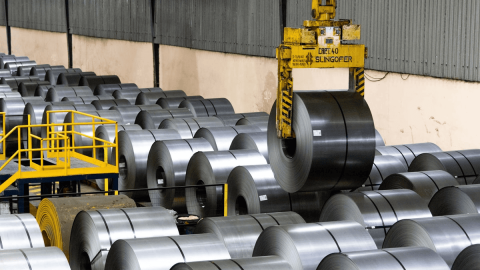Tata Steel share Price Jumps 4.2% After RBI Rate Cut; Looks Bullish at Rs 138
Tata Steel share price jumped 4.24 percent on Friday after RBI announced reduction in interest rates. Tata Steel has managed to close above a major resistance level, as discussed by TopNews in previous technical chart analysis. Tata Steel opened the session at Rs 133.3 and touched intraday high at Rs 138.75. The stock closed at Rs 138.16, suggesting an end to recent downtrend in the steel major, at least in the short term. Tata Steel maintains investor interest due to its leadership in the steel sector and expansion initiatives. TopNews team delves into Tata Steel's performance, recent analyst insights, and a detailed technical analysis.
Stock Performance Overview
Tata Steel’s current market cap stands at Rs 1.73 trillion, reflecting its solid market presence in India’s metal and mining sector.
Opening Price: Rs 133.30
Day's High: Rs 138.75
Day's Low: Rs 132.56
P/E Ratio: 62.99 (indicating a premium valuation relative to earnings)
Dividend Yield: 2.61%, making the stock attractive to long-term dividend-focused investors.
This valuation suggests that investors have high expectations for Tata Steel’s future earnings potential, which may also reflect optimism about global steel demand recovery.
Recent Analyst Reports and Recommendations
Recent analyst reports suggest mixed sentiment for Tata Steel, with the key focus on improving demand and the impact of raw material prices.
A report from Motilal Oswal issued in mid-January projects a target price of Rs 160, citing gradual recovery in the steel sector and easing of input costs.
Analysts at ICICI Securities maintain a "Hold" rating, noting that global steel prices and Tata Steel’s cost-efficiency measures could drive future earnings.
However, analysts caution that the high P/E ratio could limit near-term upside unless the company reports significant growth in profit margins.
Technical Analysis: Candlestick Patterns
Recent candlestick patterns indicate volatility, with the stock attempting to recover from a recent support level near Rs 132.
A bullish engulfing pattern was observed on the daily chart, suggesting that buyers may be stepping in to drive prices higher.
The 50-day moving average indicates short-term resistance near Rs 140, while the 200-day moving average at Rs 150 serves as a medium-term ceiling.
The Relative Strength Index (RSI) currently hovers near 48, signaling neutral momentum, with a potential upward shift if RSI crosses above 50.
Investors should monitor these key levels closely to identify signs of sustained recovery or further weakness.
Fibonacci Retracement Analysis
Using Fibonacci levels, key price zones can provide insights into future support and resistance areas for Tata Steel.
| Level | Price (Rs) |
|---|---|
| 0% (Recent Low) | 122.62 |
| 23.6% Retracement | 136.18 |
| 38.2% Retracement | 146.78 |
| 50% Retracement | 153.61 |
| 61.8% Retracement | 160.45 |
| 100% (Recent High) | 184.60 |
The stock is currently near the 23.6% retracement level, which may act as an immediate resistance. A breakout above Rs 136.18 could pave the way for further gains toward Rs 146.78.
Support and Resistance Levels
Support and resistance analysis provides a framework for identifying key price points that could influence short-term stock movements.
Support Levels: Rs 132.00 and Rs 125.50
Resistance Levels: Rs 140.00 and Rs 153.00
If the stock manages to close above Rs 140, it may gain momentum and test the higher resistance at Rs 153. Conversely, a breach below Rs 132 could trigger further declines toward the Rs 125 level.
Investment Strategies and Recommendations
Investors should adopt a balanced approach based on their risk tolerance and market outlook.
Short-term traders may look for buying opportunities near support levels, targeting a breakout above Rs 140.
Long-term investors should monitor the company’s earnings trajectory and operational performance, particularly in light of its high P/E ratio.
Diversification within the sector can reduce risk, with exposure to competitors such as JSW Steel and SAIL offering a hedge against volatility in steel prices.
